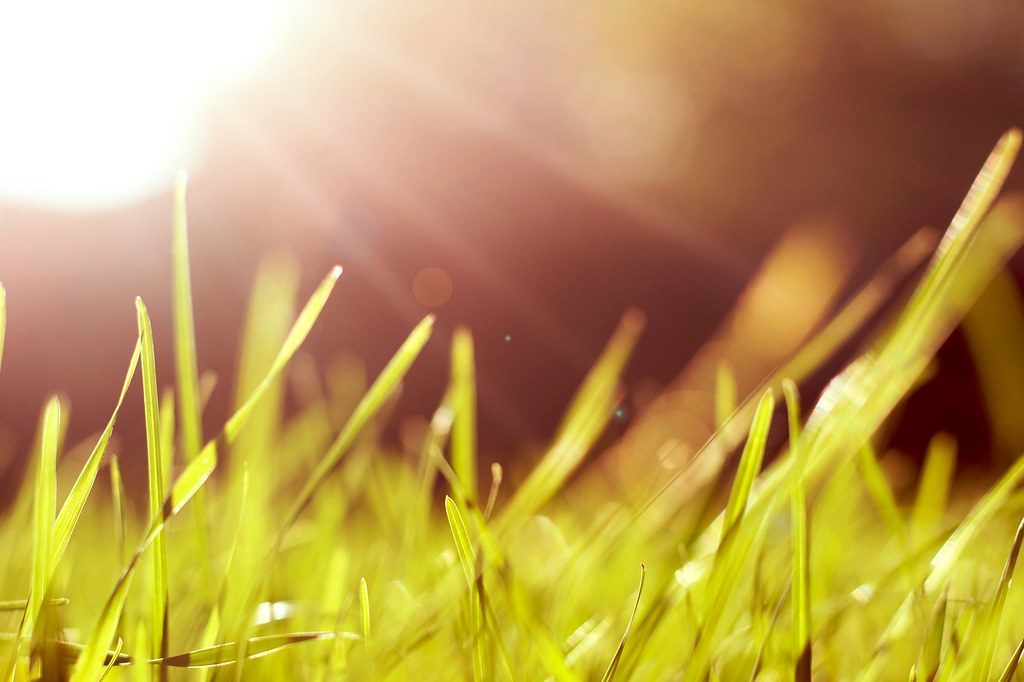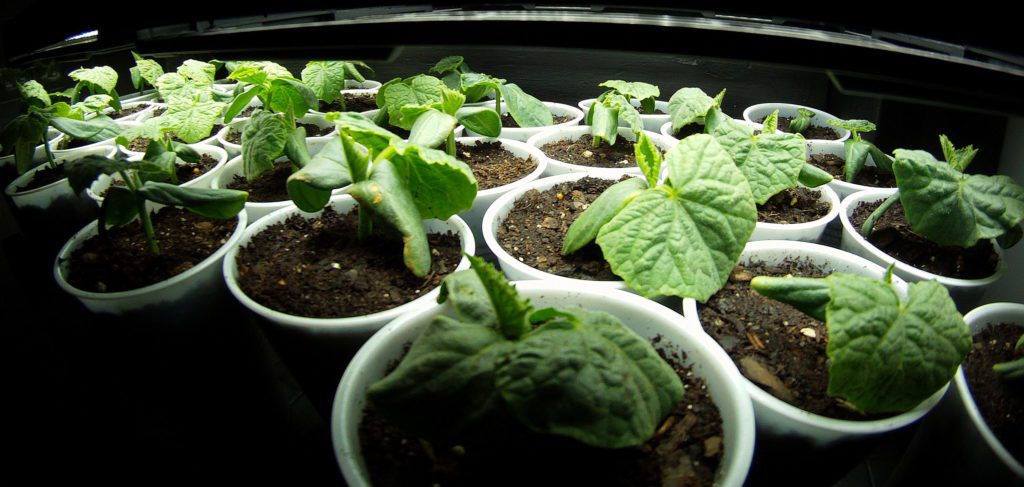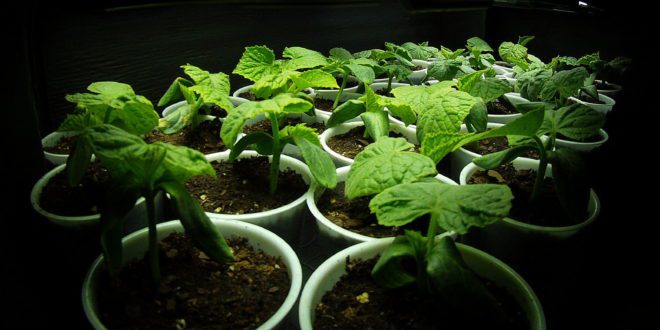Picture by jalexartis Photography is licensed under CC BY-SA 2.0, https://www.flickr.com/photos/fayncbikerjaa/13215803525/
LED grow lights offer so many options when it comes to individual care of each crop. Considering the needs and the development stage of a certain plant, adjusting the adequate light color spectrum can do wonders.
Keep on reading to learn more about how to grow plants with a full spectrum LED grow light and get informed of each color’s properties and their effect on the greenery.
What is the Color Spectrum?
The color spectrum is the full range of visible light wavelengths, also known as colors. In horticulture it is the most important characteristic of each artificial and supplemental light source.
Sun’s Color Spectrum

“HBW” by David Joyce is licensed under CC BY-SA 2.0, https://bit.ly/2Eh7B7r
The sun is the ultimate color spectrum provider, as its light contains all colors and wavelengths. It’s considered to be a plant’s best friend since the beginning of time. Each color of the light spectrum is beneficial for specific vegetative functions and plants absorb each wavelength in the sun’s range differently.
What Color Spectrum Do Plants Use the Most to Grow?
The Myth of Growing with Blue and Red Lights
Light is the driving force of the photosynthesis process and while the full spectrum contains various colors, there are some light ranges which are falsely considered more beneficial than others.
While yellow and green are mostly (but not fully) reflected by the plants, this is not the case with red and blue wavelengths which are being highly absorbed. Those differences in the light absorbance have led many farmers to the wrong conclusion that crops need only red and blue lights to thrive. In fact, photosynthesis is a very complex process and plants actually use the whole light spectrum.
The Application of Different Grow Light Colors
Crops require different grow light colors, depending on the growth stage. In general, plants are healthier when the light provided has a lot of red and blue and a bit less green and yellow.
Red lights. The most beneficial light spectrum for the matured plant is the red one.
- 630-660 nm wavelength;
- Essential for the flowering stage of the plant;
- Encourages stem growth and regulates leaf expansions and seed germination;
- Natural peak of red light from the sun is through the summer and autumn. During that time of the year, the outside grown crops are encouraged by the warm red light.
Blue lights. If you have wondered what the best color spectrum for vegetative growth is, the answer is blue.
- 400-520 nm wavelength;
- Perfect for the early state of the plant;
- Encourages leaf thickness and root growth;
- Naturally, spring time is the peak season of the blue light and that is when most of the plants start their seedlings to maturity growth process.
Note that light of the blue range could be harmful to some crops if they are overexposed. To avoid that, try the combination of blue with other spectra.
Green lights.This highly underestimated light range supports the vegetation and photosynthesis processes. Their effect on plant growing is often misunderstood.
- 500-600 nm wavelength;
- Supportive role to the plant’s full growing process;
- Some of the green light is being reflected, that is why we see a plant’s color in the green range;
- A big portion of it is being transmitted to the lower leaves or simply absorbed to encourage photosynthesis;
- In nature, plants are greener and thrive throughout the warm seasons and certain ones throughout the whole year.
The Best Color Spectrum for Your Plants
Considering the above-mentioned applications of the light range, finding the best grow light color should be quite easy. The perfect spectrum should be chosen depending on your yield goals, the type of plant you are trying to cultivate and its individual growth requirements.
In general, lights that grow plants vary in specifications and range. All vegetative stages from seedling to maturing to flowering and, finally, fruiting, require a different color spectrum. Therefore, the ideal solution would be adjusting the LED grow light according to the current growth stage of the crop.
What are LED Bulbs?
A LED grow light is a horticultural installation. It’s a complete lighting product that consists of one or more LED bulbs components added to the fixture.
Have you ever wondered what kind of bulb you need to grow plants? Well, LED bulbs are accustomed to specific wavelengths. In other words, they individually correspond to the separate colors of the light spectrum.
LED bulbs can be purchased in many colors. Once you know what kind of result you are aiming for, all you need to do is invest in the well-being of your plant.
White Light for Growing Plants
How to Make White Light?
The sun is the only natural provider of pure white light spectrum. Each LED bulb has its own wavelength, so in order to artificially create a sufficient source of white light – we have only one solution- a combination of different colored bulbs into one fixture.
The best light bulb to grow plants might be any LED bulb. Lower quality LED lights are relying solely on a mixture of blue and red light. Meanwhile, the advanced products are revolutionizing the way plants are cultivated, by including various color bulbs into their grow light installation. The customization feature of LED grow lights allows the fusion of enough colors to make white light.
Is White Light actually Good for Your Plants?
When plants absorb the white light from the sun, they actually have access to all the colors of the spectrum. So yes, it would be fair to conclude that the white light is a beneficial one. But we should not underestimate the power of wavelength customization through the LED grow light technology.
The Importance of Light Intensity
Light intensity plays a major role in the general growth process of the plants. Just like with the spectrum, the improper levels of intensity can negatively affect a healthy crop. That is a valid reason to consider a plants preferences of sunlight and/or shade exposure.
When using LED grow lights for your indoor or greenhouse farming, you are able to control light’s intensity by simply situating the fixture closer or farther to the crops.
Best Lights Used to Grow Plants

Picture by jalexartis Photography is licensed under CC BY-SA 2.0, https://www.flickr.com/photos/fayncbikerjaa/13175092884/
The grow light market surely is very competitive when it comes to problem solving. With a wide range of artificial light products available, farmers are often confused by which light is the best to grow their plants.
LED grow lights are the most innovative and efficient lighting solution for horticultural issues. Through providing the full color spectrum and intensity control, as well as being economically and environmentally friendly, there are endless advantages of LED lights.
Author’s Bio:
 Luis Rivera
Luis Rivera
Luis has 20+ years of experience in global market expansion, business development, mergers and acquisitions, business re-engineering, finance and investor relations of software companies. He is passionate about technology, spectral science, indoor farming, food production, automation, and more. Since 2015 he is the president of Advanced LED Lights, a leading LED grow lights manufacturer based in Hiwasse, Arkansas. When not at work, Luis enjoys swimming, yoga, as well as growing grapes and flowers in Sonoma, California.
 Alternative Energy HQ solar power for homes, wind energy, and bio fuel issues
Alternative Energy HQ solar power for homes, wind energy, and bio fuel issues







